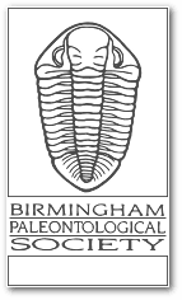Visitor
Paleo in the News
Fish rescue wins New Scientist Editors Award at Earth Photo 2025
This photo series capturing efforts to save the Chinook salmon of the Klamath river in the western US won the New Scientist Editors Award at the Earth Photo 2025 competition
Categories: Fossils
Compare shark sizes on our infographic
As Jaws celebrates its 50th anniversary, Science News explores the vast range of shark sizes, from megaladon to the dwarf lanternshark.
Categories: Fossils
The surprising silver lining to the recent boom in invertebrate pets
From spiders to scorpions, some 1000 different invertebrate species are traded globally as pets. This is bad for biodiversity – but there is an upside, says Graham Lawton
Categories: Fossils
Australian moths use the stars as a compass on 1000-km migrations
Bogong moths are the first invertebrates known to navigate using the night sky during annual migrations to highland caves
Categories: Fossils
This moth species may use the Milky Way as its guiding star
Bogong moths migrate up to 1,000 kilometers from Australian plains to mountain caves to escape the summer heat. The stars may help them get there.
Categories: Fossils
‘Dragon Man’ skull may be the first from an enigmatic human cousin
Ancient proteins and DNA may peg a 146,000-year-old Chinese skull as the most complete fossil to date from Denisovans, a puzzling line of Asian hominids.
Categories: Fossils
Baby’s First Words Crossword
Solve our latest interactive crossword.
We'll publish science-themed crosswords and math puzzles on alternating months.
Categories: Fossils
Ancient monstersaur had 'goblin-like' teeth and sheddable tail
The discovery of a prehistoric tail-shedding reptile reveals more about large lizard life and lineage during the Late Cretaceous Epoch
Categories: Fossils
Biotech firm aims to create ‘ChatGPT of biology’ – will it work?
A UK biotech firm spent years gathering genetic data that has uncovered 1 million previously unknown microbial species and billions of newly identified genes – but even this trove of data may not be enough to train an AI biologist
Categories: Fossils
Cryopreserved sea star larvae could enable vital species to recover
Sea star larvae have been stored at −200°C and thawed for the first time, a step towards restoring populations that have been ravaged by disease
Categories: Fossils
How attacks on evolution in classrooms have shifted over the last 100 years
Since the Scopes trial in 1925, Science News has reported on legislative attempts to undermine the teaching of evolution.
Categories: Fossils
Is nuclear energy good? A new book explores this complex question
Atomic Dreams explores nuclear energy's future in the U.S. through the history of Diablo Canyon, California's last operational nuclear power plant.
Categories: Fossils
Monster salamander with powerful jaws unearthed in Tennessee fossil find
A massive, extinct salamander with jaws like a vice once roamed ancient Tennessee and its fossil has just rewritten what we thought we knew about Appalachian amphibians. Named Dynamognathus robertsoni, this powerful predator wasn t just a curiosity; it may have sparked an evolutionary chain reaction, shaping the region s remarkably diverse salamander population. Once thought to be isolated to southern Alabama, salamanders like this one were clearly far more widespread and potentially far more influential than previously believed. And it all began with a volunteer sifting through tons of dirt near East Tennessee State University.
Categories: Fossils
Monster salamander with powerful jaws unearthed in Tennessee fossil find
A massive, extinct salamander with jaws like a vice once roamed ancient Tennessee and its fossil has just rewritten what we thought we knew about Appalachian amphibians. Named Dynamognathus robertsoni, this powerful predator wasn t just a curiosity; it may have sparked an evolutionary chain reaction, shaping the region s remarkably diverse salamander population. Once thought to be isolated to southern Alabama, salamanders like this one were clearly far more widespread and potentially far more influential than previously believed. And it all began with a volunteer sifting through tons of dirt near East Tennessee State University.
Categories: Fossils
Monster salamander with powerful jaws unearthed in Tennessee fossil find
A massive, extinct salamander with jaws like a vice once roamed ancient Tennessee and its fossil has just rewritten what we thought we knew about Appalachian amphibians. Named Dynamognathus robertsoni, this powerful predator wasn t just a curiosity; it may have sparked an evolutionary chain reaction, shaping the region s remarkably diverse salamander population. Once thought to be isolated to southern Alabama, salamanders like this one were clearly far more widespread and potentially far more influential than previously believed. And it all began with a volunteer sifting through tons of dirt near East Tennessee State University.
Categories: Fossils
Fewer scavengers could mean more zoonotic disease
Scavenger populations are decreasing, a new study shows. That could put human health at risk.
Categories: Fossils
100 years after the Scopes trial, science is still under attack
In 1925, John Scopes was indicted for teaching evolution. Science News looks at the forces that led to the trial and how expertise was the big loser.
Categories: Fossils
Black hole–shredded megastars power a new class of cosmic explosions
These explosions, called extreme nuclear transients, shine for longer than typical supernovas and get 30 to 1,000 times as bright.
Categories: Fossils
A common parenting practice may be hindering teen development
A poll shows U.S. parents are wary of unsupervised teens, but lack of independence undermines normal development, experts say.
Categories: Fossils
This paint ‘sweats’ to keep your house cool
This experimental paint reflects sunlight, emits heat and mimics sweating to cool buildings without air conditioning, even in the tropics.
Categories: Fossils
